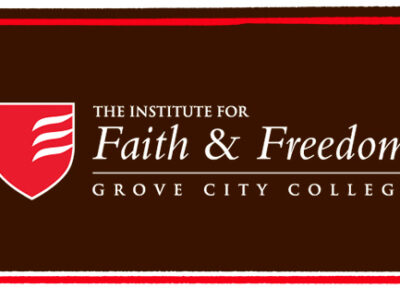Professors Calabresi and Lindgren in a recent Wall Street Journal article entitled “Supreme Gerontocracy” (April 8) complain that U.S. Supreme Court justices are retiring 10 years later on average than were the earlier justices. Therefore, they support the adoption of a constitutional amendment which would limit the length of term that a justice could serve on the Court to 18 years. Constitutional history, the genius of our founders, the enduring value of our form of government and the inevitable further politicization of the Court demonstrate that this is not a good idea.
Calabresi and Lindgren say that according to some, the justices are “feeble” or “too mentally incompetent” to contribute to the demanding argumentation and decision-making of the Court. They also maintain that given the dearth of retirements, a sitting president could serve a full term or even two, and not have an opportunity to appoint a single justice.
It is not particularly surprising that judges are retiring later given the fact that modern medicine is able to maintain life longer and life at a high level of quality. At best the proposal to require forced retirement seems to be oddly counter to current trends favoring continued activity and contribution by older citizens.
Particularly troubling to contemplate is what would have happened had the Calebresi/Lindgren-supported proposal been in effect from the Court’s beginnings in 1789. John Marshall, Chief Justice of the Court for 34 years, would have been unceremoniously ushered off the bench just before his famous decisions in McCulloch v. Maryland and Cohens v. Virginia and well before Gibbons v. Ogden. Other justices would have been forced to turn in their gavels just as they were reaching their “judicial primes.” Joseph Story, Stephen J. Field, and Hugo Black, all served 34 years. Oliver Wendall Holmes served 29 years. Louis Brandeis and William Brennan served 22 years and 33 years respectively.
What about the allegation that presidents have little opportunity to appoint justices. Every full-term president since George Washington, with the exception of Jimmy Carter, has appointed at least one Supreme Court justice. Of course, George W. Bush has not appointed one, but he should have an opportunity to do so during his second term. That would seem to be an amazing record of presidential participation. However, Calabresi and Lindgren call it “unacceptable” and refer to the fact that it has been 11 years since the last appointment as a “drought.”
The authors now come to what seems to be their principal complaint about the long service of justices in the most recent three decades. They assert that in a modern democracy “no powerful governmental institution…should go for 11 years without a democratic check on its membership.” No “powerful officials,” they continue, should hold office for long periods, “some serving for 35 years or more,” without democratic review. Such a system, they conclude is “a relic of the 18th century and of pre-democratic times.”
What they really dislike about the Court is the irritating reminder that the justices cannot be reached by “the people” because the U.S. Constitution is not a uniformly democratic document. Professors Calabresi and Lindgren have no apparent appreciation for the genius of the founders who mixed together the strengths of various ancient governmental forms into an enduring yet unique document. Madison, Hamilton and others made some parts of the new government responsive to the people—democratic. The House is the best example. They made other parts of the new government “aristocratic,” the Senate being a continuing illustration. They gave quasi-monarchical veto power to the president. And, back to the matter at hand, they provided the Supreme Court with as much immunity from direct democratic control as possible. Life tenure, on good behavior, according to Federalist No. 78, was intended to insulate judges not only from an over zealous executive, but from “the encroachments and oppressions of the representative body.”
To Professors Calabresi and Lindgren, references to the founders and their purposes are merely interesting artifacts or “relics” from a political “ice age” that they call “pre-democratic.” They are convinced that increasing the frequency of presidential U.S. Supreme Court nominees and senatorial confirmation hearings will “restore sanity to the process of selecting justices.” Instead, what is likely to happen is that the implementation of the proposal they support will further politicize the Court and prematurely remove future judges who have much more that they could contribute to legal thought. In the process the rich diversity of the U.S. Constitution, some parts of which are unapologetically non-democratic, will be lost.


